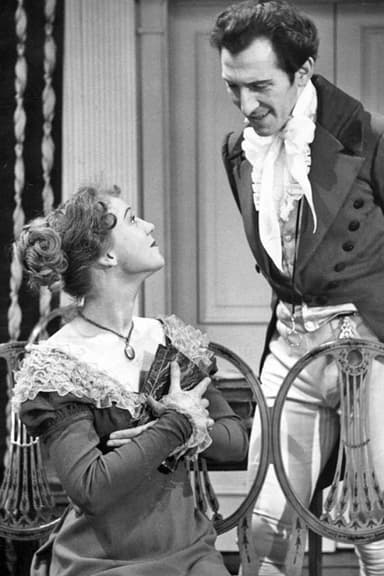
Pride and Prejudice
1980 • Drama • TV-PG
In early 19th century England, Mr and Mrs Bennet's five unmarried daughters vie for the affections of rich and eligible Mr Bingley and his status-conscious friend, Mr Darcy, who have moved into their neighbourhood. While Bingley takes an immediate liking to eldest daughter Jane, Darcy has difficulty adapting to local society and repeatedly clashes with second-eldest Elizabeth.
Why you should read the novel
Reading Jane Austen’s 'Pride and Prejudice' offers an immersive experience into early 19th-century English society, allowing you to savor the wit, satire, and insight in Austen’s own words. The novel provides deeper access to the interior thoughts, motivations, and emotional nuances of Elizabeth Bennet and Mr. Darcy, enriching your understanding of their development in ways that adaptations often condense. By engaging with the original text, you’ll encounter the full spectrum of Austen’s subtle humor and powerful themes—social class, marriage, and personal growth—that have inspired countless interpretations.
Adaptation differences
One main difference between the 1980 adaptation and the novel is pacing; the series necessarily condenses certain scenes and conversations for episodic structure, omitting some of Austen’s detailed narrative passages and inner monologues, particularly those revealing Elizabeth’s private reflections. This streamlines the story but can reduce complexity, especially regarding side characters’ arcs and secondary subplots.
Another notable difference is the handling of dialogue. While the adaptation often uses Austen’s original dialogue, it sometimes modernizes or abbreviates it for clarity and brevity, losing the full flavor of her irony and subtlety. Some scenes that are pivotal in the book, like Darcy's dramatic first proposal or the witty exchanges between Elizabeth and her father, may be less nuanced on screen.
Additionally, the series must visualize and dramatize events that the novel might only hint at or describe indirectly, sometimes resulting in added scenes or altered emphasis. This includes more explicit portrayals of certain social settings or relationships that Austen skillfully alludes to rather than directly narrates.
Finally, watching the tv series imposes a fixed interpretation of characters and settings by casting actors and choosing costumes and locations. Reading the novel allows for personal imagination and connections, and provides access to Austen’s characteristic narrative voice and commentary—elements intrinsic to her storytelling, but difficult to fully translate to television.
Pride and Prejudice inspired from
Pride and Prejudice
by Jane Austen



















